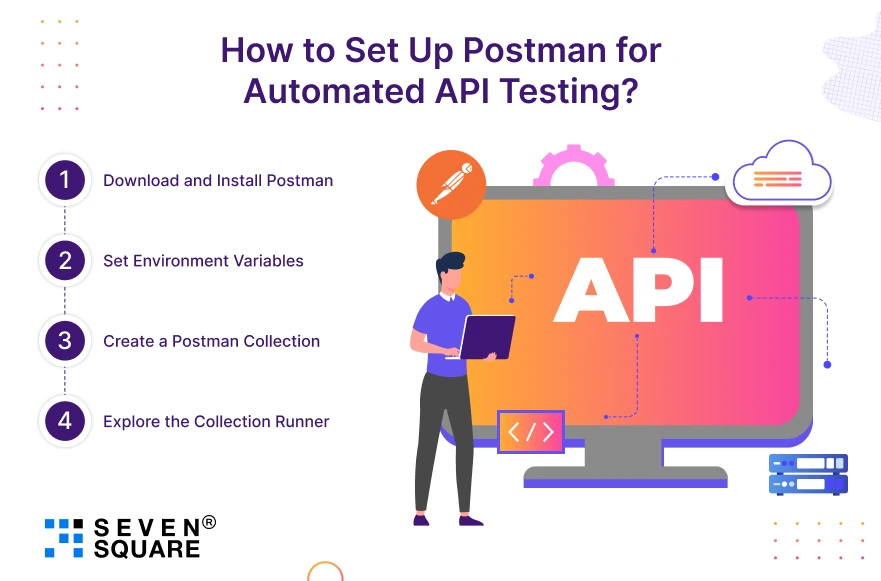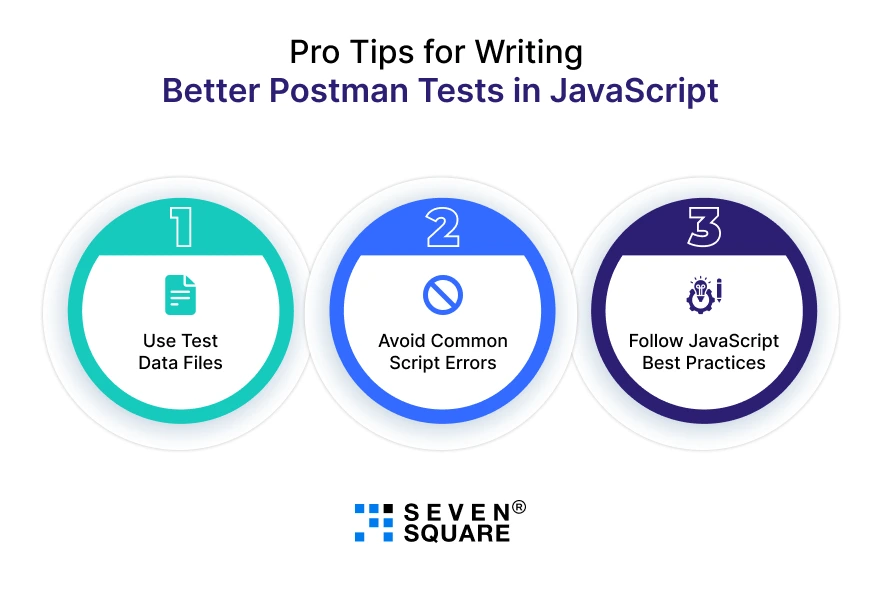If you’re building APIs, testing them is important. And when it comes to API testing automation, two tools dominate the scene: Postman and JavaScript.
Postman has evolved from a simple API client to a powerful platform for writing and managing test collections.
By combining Postman API testing with JavaScript test scripts, you unlock the ability to create dynamic, repeatable, and automated API validations, all within a familiar UI.
JavaScript makes it easy to write flexible assertions, handle complex logic, and reuse code across multiple requests.
Whether you’re testing response codes, validating JSON schemas, or chaining requests, JavaScript supercharges your Postman tests.
In this blog, you can learn how to automate Postman test collections using JavaScript, but also see a real-world GitHub integration, complete with live working code you can fork and run in your own CI/CD pipeline.
What Is Postman API Testing and Why Automate It
Postman API testing lets you verify that your endpoints behave the way they’re supposed to, including status codes, response bodies, data formats, and more.
While manual testing works for quick checks, it doesn’t scale. Here’s where automation steps in.
When you automate Postman tests, you can run entire collections with a single command repeatedly, reliably, and even inside CI/CD pipelines.
It minimizes human error, speeds up releases, and ensures your backend services are always in top shape.
Using the Postman collection runner, you can execute all your API test cases in a sequence. With automation, you can:
- Validate APIs during every deployment.
- Catch bugs early in microservices.
- Monitor live SaaS APIs in production.
In short, Postman collection automation is the fastest way to bring confidence to your backend testing strategy.
How to Set Up Postman for Automated API Testing?

Before going into scripting, let’s get your environment ready.
Step 1: Download and Install Postman
Go to Postman’s official site and install the app for your OS.
Step 2: Set Environment Variables
Define your base_url, api_key, or other dynamic values.
Postman allows you to create environments with variable values, perfect for switching between dev, staging, and production.
Step 3: Create a Postman Collection
Group your API requests into a collection. Think of it as a folder containing your API calls and corresponding test scripts.
Step 4: Explore the Collection Runner
The Postman Collection Runner allows you to run all requests in a collection, with test results, response times, and summaries.
It’s the foundation of your Postman collection automation tutorial.
With your setup ready, you can write your first automated test scripts in JavaScript.
How to Write Postman Test Scripts Using JavaScript? (With Code)
Once your Postman collection is set up, the next step is to write powerful, reusable JavaScript test scripts.
These help you validate responses, check data integrity, and automate assertions. Here are some Postman JavaScript tests you can use right away.
Response Validation
Ensure that your API is returning a successful HTTP response.
pm.test("Response is OK", function () {
pm.response.to.be.ok;
});
Status Code Verification
Verify if the expected status code is returned (e.g., 200 for success, 404 for not found).
pm.test("Status code is 200", function () {
pm.response.to.have.status(200);
});
Schema Validation (Using JSON Schema)
Validate if the structure of your JSON response matches the expected format.
const schema = {
"type": "object",
"properties": {
"id": { "type": "number" },
"name": { "type": "string" },
"email": { "type": "string" }
},
"required": ["id", "name", "email"]
};
pm.test("Response schema is valid", function () {
pm.response.to.have.jsonSchema(schema);
});
Modularizing Tests for Scalability
To keep your JavaScript test scripts clean and scalable, extract reusable logic into functions:
function checkStatus(code) {
pm.test(`Status is ${code}`, function () {
pm.response.to.have.status(code);
});
}
checkStatus(200);
Modular code not only keeps your tests clean but also helps you reuse logic across multiple requests in your Postman JavaScript test collection.
Explore the Full Postman JavaScript Test Collection Code on GitHub.
How to Automate the Entire Collection Using Newman?
Once your tests are written, it’s time to run them automatically using Newman, the command-line companion for Postman.
Step 1: Install Newman
npm install -g newman
Step 2: Run Your Postman Collection from the Command Line
newman run ./your-collection.json
Step 3: Generate Detailed Reports
Newman can output reports in various formats:
newman run ./your-collection.json -r cli,html
This gives you a full HTML report of your Newman Postman automation, perfect for audits and QA reviews.
Pro Tip: Add a Postman environment file for dynamic base URLs and tokens.
newman run collection.json -e dev-environment.json
With Newman, you can easily run Postman collections from the command line, integrate with build systems, and automate validation with ease.
Pro Tips for Writing Better Postman Tests in JavaScript

Writing test scripts in Postman is easy, but writing great ones takes a bit more effort. Here are some proven tips to improve your Postman test automation:
1. Use Test Data Files
- Want to run tests with different inputs?
- Use CSV or JSON files in the Collection Runner to simulate real-world scenarios with dynamic test data.
2. Avoid Common Script Errors
- Don’t forget to check pm.response.code correctly.
- Ensure you validate nested JSON paths.
- Handle unexpected errors gracefully.
3. Follow JavaScript Best Practices
- Use helper functions to avoid duplicate code.
- Write descriptive test names for better debugging.
- Keep scripts modular and readable.
If you’re serious about scaling API testing, you need to write Postman tests in JavaScript with clarity, precision, and reusability.
Want a JavaScript Solution? Contact Us Today!
Why is JavaScript-Driven Postman Testing a Game Changer?
To automate API testing with Postman JavaScript is to build smarter, faster, and more resilient systems.
With Postman’s intuitive UI and JavaScript’s flexibility, developers and businesses can:
- Build test suites in minutes.
- Run tests automatically with GitHub.
- Catch errors early and ship reliable APIs faster.
Whether you’re launching a SaaS platform, scaling microservices, or just want peace of mind, Postman + JavaScript delivers.
FAQs
- To automate Postman tests, write JavaScript test scripts inside each request’s “Tests” tab.
- Then run your entire Postman collection using Newman or CI tools like GitHub Actions to automate the process end-to-end.
- Yes, using Newman, you can run Postman from the command line with just one command.
- It also supports HTML reports and can use environment and data files for dynamic testing.
- You can use GitHub Actions to run your Postman test scripts every time code is pushed.
- Just store your Postman collection in a GitHub repo and create a workflow YAML file that uses Newman to execute the tests.
- Organize your Postman test collection by grouping endpoints by module, using folders, applying consistent naming conventions, and writing modular JavaScript test scripts for better reusability.